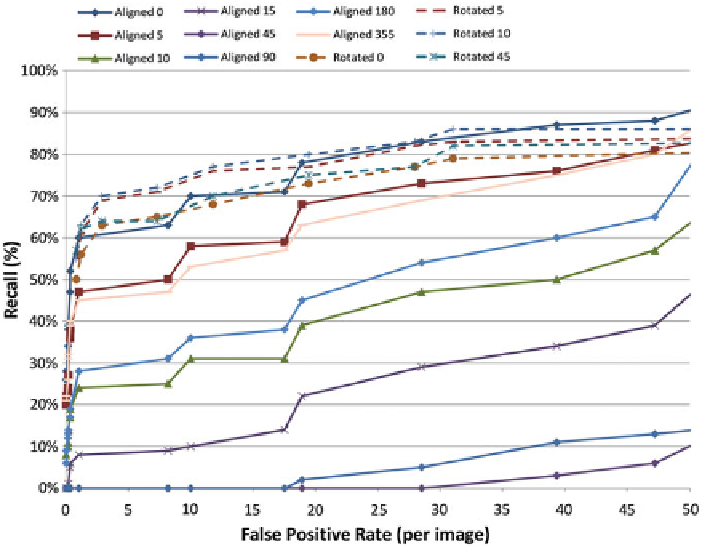Graphics Reference
In-Depth Information
Fig. 9.7
The graph above shows the performance as test images are rotated in 5
◦
increments.
Solid
lines
represent the detector trained with an aligned positive imagery set,
dashed lines
represent the
detector trained with a rotated positive imagery set
9.5.2 Performance of Rotation Invariance
Comprehensive evaluation determined the two detection methods' invariance to in-
image-plane rotations. 100 images from the four flights were annotated with vehicle
rotation information and subsequently rotated in 5
◦
increments for a total of 7,200
test images. Figure
9.7
shows the results of processing these 72 series of images with
the detector that had been trained on aligned training images (see Sect.
9.3.2
) and
with the detector trained on rotated training images (Sect.
9.3.3
).
9.5.2.1 Discussion
Vehicles rotated beyond 5
◦
in either direction cannot be detected well with the
“aligned” detector (Fig.
9.7
, solid lines), confirming prior analysis of the Viola-
Jones method [
9
]. This suggests that a training set rotated in 5
◦
increments would
yield superior results. Indeed, the detector trained on rotated images is significantly
more robust toward rotated vehicle detections (dashed lines in Fig.
9.7
).

